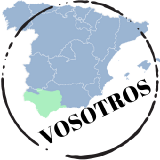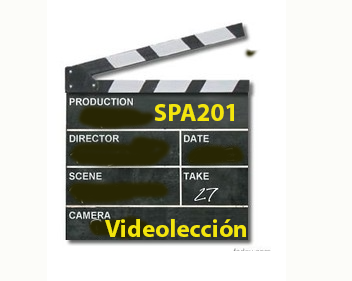4.5: Sección 1 - El Presente Perfecto
- Page ID
- 112248
Antes de ver
In the video you will hear many examples of the presente perfecto, also known as the pretérito perfecto. Watch the first two minutes of the video and listen for this structure "¿has + participio alguna vez?" (Have you ever done X?) and write down as many examples of the structure as you can. Note what the narrator has done or not done.
VideoEle by Agustín Iruela (CC-BY-NC-ND)
Después de ver
1. ¿Cuántos ejemplos escuchaste?
2. ¿Qué no ha hecho la narradora?
The narrator is demonstrating a very helpful verb tense, and its use is already familiar to you since we also use it in English.
| ¿Has almorzado? | Have you eaten lunch? |
| ¿Has leído la tarea? | Have you read the assignment? |
| ¿Has vivido alguna vez en un país extranjero? | Have you ever lived in a foreign country? |
Forming the presente perfecto
The present perfect is a compound tense, which just means that you will combine two verb forms:
Haber + Past participle (participio pasado)
(1) The first verb, haber, is conjugated in the present tense, and you can see that below.
Congugation of Haber
| yo he | nosotros/as. hemos |
|
tú has |
|
| él/ella/Ud. ha | ellos/ellas/Uds. han |
| *For more information on the regional forms "vos" and "vosotros", click the images above | |
(2) The second verb appears as a past participle.
How to form a past participle
| hablar ---> habl | -ado |
| comer ---> com | -ido |
| vivir ---> viv | -ido |
He enchufado los altavoces. I have plugged in the speakers.
¿Has comprado una tableta? Have you bought a tablet?
Marta ha encendido la computadora. Marta has turned on the computer.
Hemos actualizado la página web. We have updated the web page.
Han añadido los detalles al documento . They have added the details to the document.
¡OJO!
-er and -ir verbs whose root ends in a vowel, will have an accent over the "i" of the participle:
leído (leer > le + ído)
atraído (atraer> atra + ído)
oído (oír > o + ído)
caído (caer > ca + ído)
EXCEPTION:
If the verb ends in -uir, then the accent is not added.
construido
fluido
There are also several irregular participles, which are listed below.
Irregular past participles
| Verbo | Participio |
| abrir | abierto |
| cubrir | cubierto |
| decir | dicho |
| escribir | escrito |
| hacer | hecho |
| morir | muerto |
| poner | puesto |
| romper | roto |
| resolver | resuelto |
| ver | visto |
| volver | vuelto |
¡OJO!
Many verbs can be built on these irregular endings, so they would be irregular as well.
devolver: devuelto
Videolección
A practicar
Actividad 1
Actividad 2
Actividad 3
Aquí hay una lista de actividades. Hay que ir por la clase preguntando quién ha hecho la actividad. Hay que preguntar hasta que alguien te diga "sí".
Trata de usar pronombres de objeto directo o indirecto si es posible. A ver cuántos "si's" puedes encontrar.
Ejemplo: Leer la lectura > Pedro: ¿Carly, has leído la lectura?
Carly: No, no la he leído.
1. Subir una foto a Instagram hoy
2. Tuitear esta semana.
3. Actualizar su perfil en Indeed este mes.
4. Borrar un archivo por accidente.
5. Crear un vídeo viral.
6. Caerse porque estabas mirando tu móvil.
7. Mandar un texto mientras conducías.
8. Perder un documento importante.
9. Viajar a un país extranjero.
10. Besar un perro.
11. Escribir algo en las redes sociales que no debías.
12. Conocer a alguien por las redes sociales.
Actividad 4: La habitación
 Por fin, Carlota ha arreglado su habitación en su residencia y refleja su personalidad y gustos.
Por fin, Carlota ha arreglado su habitación en su residencia y refleja su personalidad y gustos.
Paso 1: Con otra persona de la clase, escriban en su cuaderno lo que saben de Carlota según la foto. ¿Qué ha hecho para hacer su cuarto tan cómodo?
Paso 2: Ahora piensen en sus cuartos y tomen turnos para preguntar sobre lo que han hecho para expresar su personalidad.
("Dorm Room" by Running Wolves CC BY-NC-ND 2.0)
Actividad 5: Buscamos asistentes
Paso 1: El Departamento de Español busca asistentes para ayudar en la oficina. Con otra persona preparen una lista de preguntas para los candidatos usando el presente perfecto. ¿Qué experiencia es necesaria? ¿Qué aparatos necesita saber usar?
Paso 2: Intercambien con otro grupo para tener parejas diferentes. Una persona va a ser el/la aspirante para el puesto y la otra va a entrevistarle usando las preguntas que acaban de escribir.




